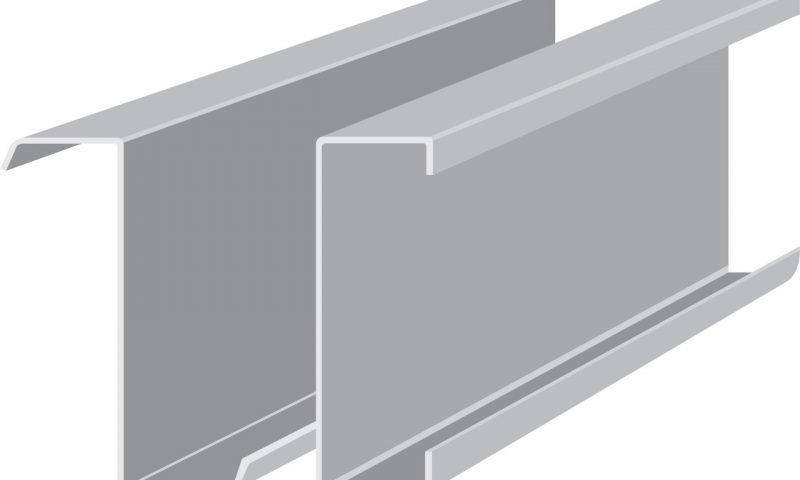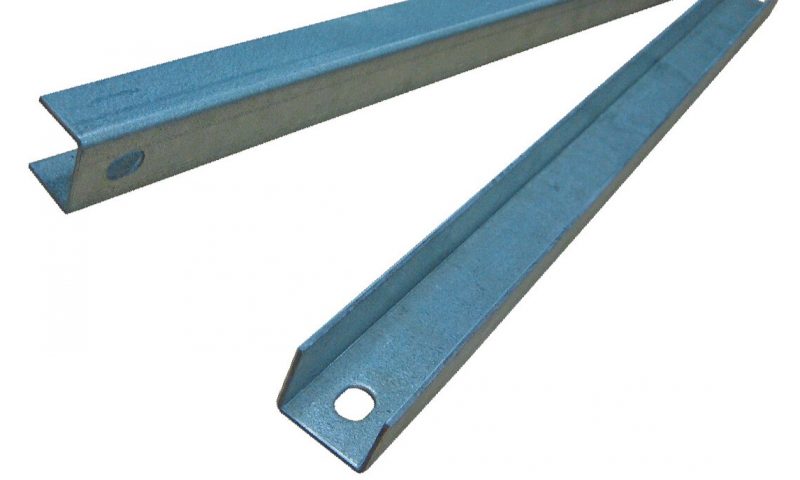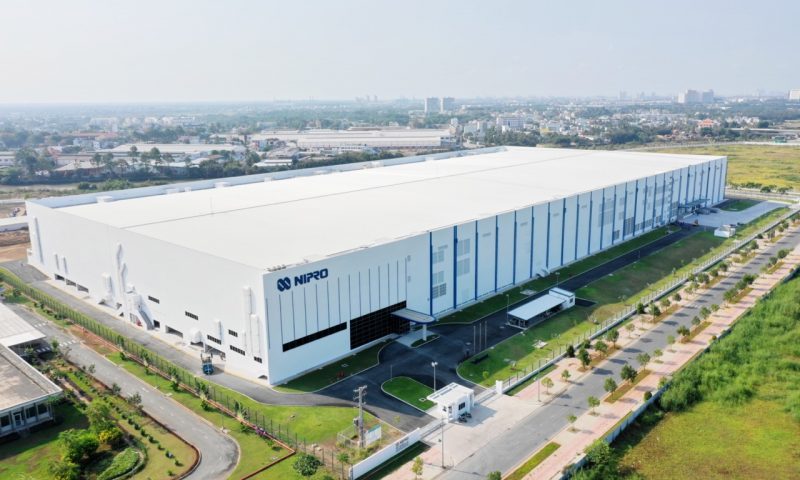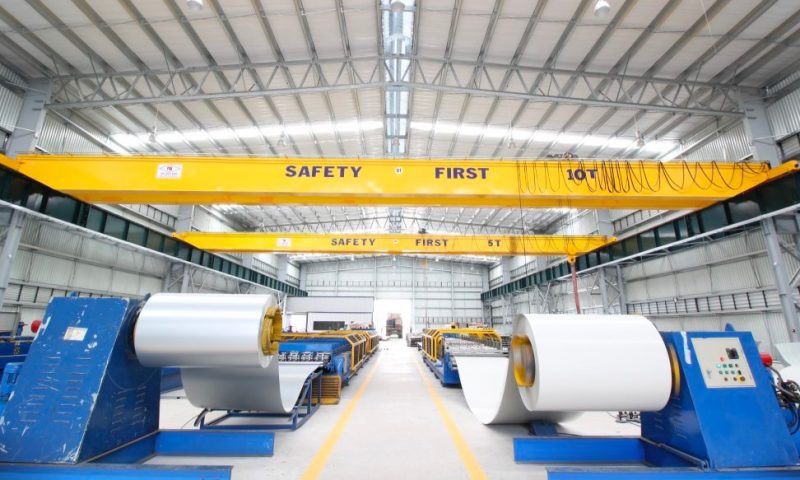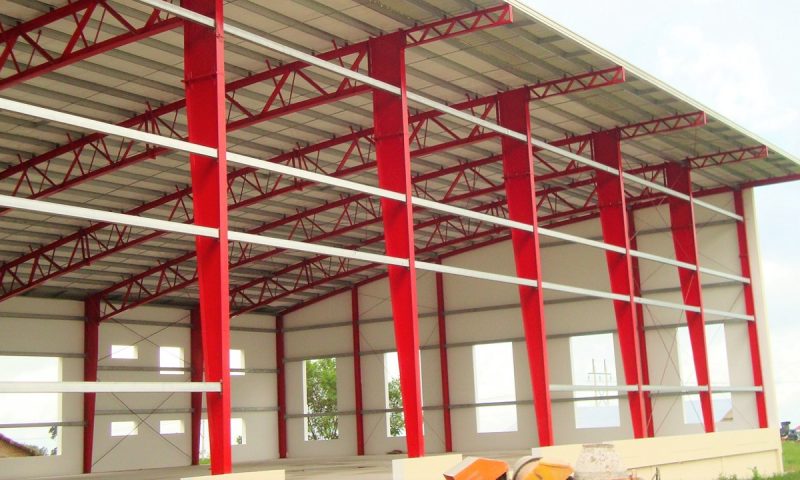With the advantages of time and cost savings in construction, pre-engineered steel factory is gradually becoming the top choice for many business owners. Let’s explore the structure, construction process, and other useful information related to building a pre-engineered steel factory in the following article with Pebsteel.
See more: Design Progress And Some Popular Models Of Pre-engineered Factory
1. What is a pre-engineered steel frame factory?
A pre-engineered steel factory or pre-engineered steel structure factor is an industrial structure that is pre-manufactured in factories before being transported and assembled on-site according to the technical drawings. These pre-engineered steel factories are constructed using a framework system (trusses, columns, beams) made of steel, primarily structural shaped steel shapes or composite steel. The production and fabrication of the steel structure for the factory take place in the factory based on existing design blueprints. Thanks to this optimized production process, the construction process at the construction site is significantly more time-efficient.\
Read more: Details of Construction Process Of Industrial Factory
2. Basic parameters of pre-engineered steel factory
These fundamental parameters play a crucial role in specifying the design, technical requirements, and costs when constructing a pre-engineered steel factory in collaborative contracts between investors and construction companies. Below are the basic specifications of a pre-engineered steel factory:
- Factory width: It is the horizontal distance between the two side walls of the factory or the space between two rows of main columns.
- Factory length: It is the distance from the front side of the factory to its rear.
- Factory height: Factory height is the distance from the base of the columns to the roof trim (the point where the roof sheeting and wall sheeting meets).
- Roof slope: It is the angle of inclination of the roof surface relative to the horizontal plane. Roof slope directly relates to the ability to drain rainwater. In most cases, the roof pitch is set at i = 15%.
- Column spacing: It is the distance between two columns within the factory. Column spacing may vary depending on the design and project requirements.
- Load capacity: The load capacity needs to be carefully calculated and considered during the pre-engineered steel factory design process to ensure that the structure can meet safety and performance requirements.
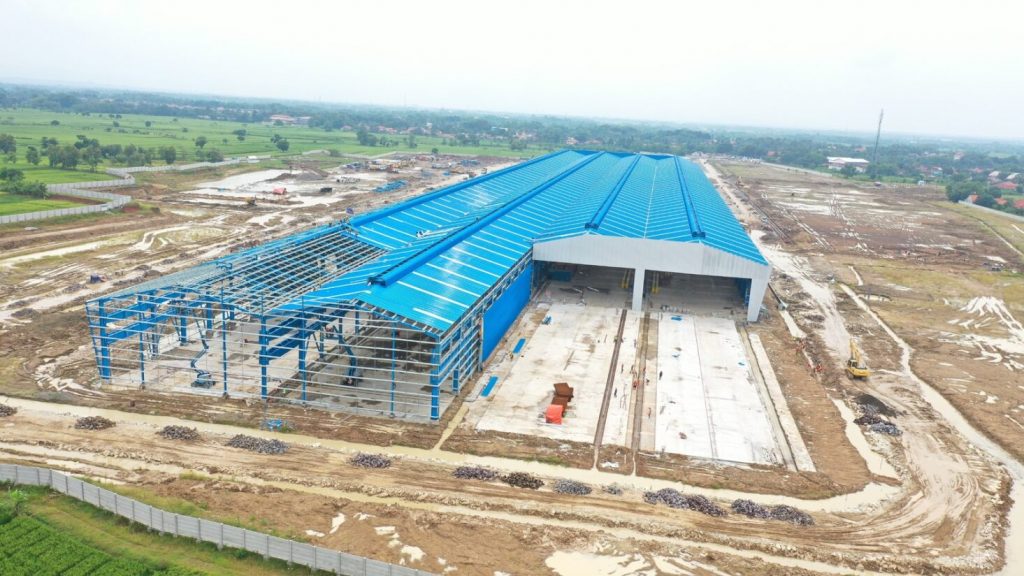
3. Structure of pre-engineered steel factory
3.1. The foundation
The foundation structure is a fundamental component of the pre-engineered steel factory structure, responsible for bearing the entire factory’s load and transmitting it to the ground. Reinforced concrete slab foundations are still used in pre-engineered steel factory construction due to their remarkable strength. There are various types of foundations, including single footing, strap footing, raft footing, and pile footing foundation, depending on the geological characteristics and loads that the project must bear.
Below the factory’s foundation is a layer of compacted soil and sand, followed by a concrete layer. The thickness of the concrete layer on the foundation depends on the loads imposed by machinery and vehicles moving within the factory. Typically, the factory floor is polished or coated with an epoxy layer to ensure that the surface remains clean and shiny during use.
Read more: Prefabricated Factory Structure
3.2. Main structural frame system
The main structural framework of the factory includes elements such as steel columns, beams, and trusses. In general, the pre-engineered steel factory structure is composed of components capable of bearing significant loads from various construction projects. Typically, to construct a complete steel factory structure, three main parts are required: the main frame, the lateral frame, and the sub-structural frame.
Read more: What is Structural Steel? Types of Structural Steel and Shapes
3.3. Sky light and canopy
Sky lights are typically positioned at the top of the factory, serving the purpose of supporting ventilation and ensuring a well-ventilated interior during operations and production. A canopy is a type of awning used to shield the factory from environmental factors at the doorways or windows of the factory.
Read more: Double Layer Steel Floor Structure And Standard Layout Guideline
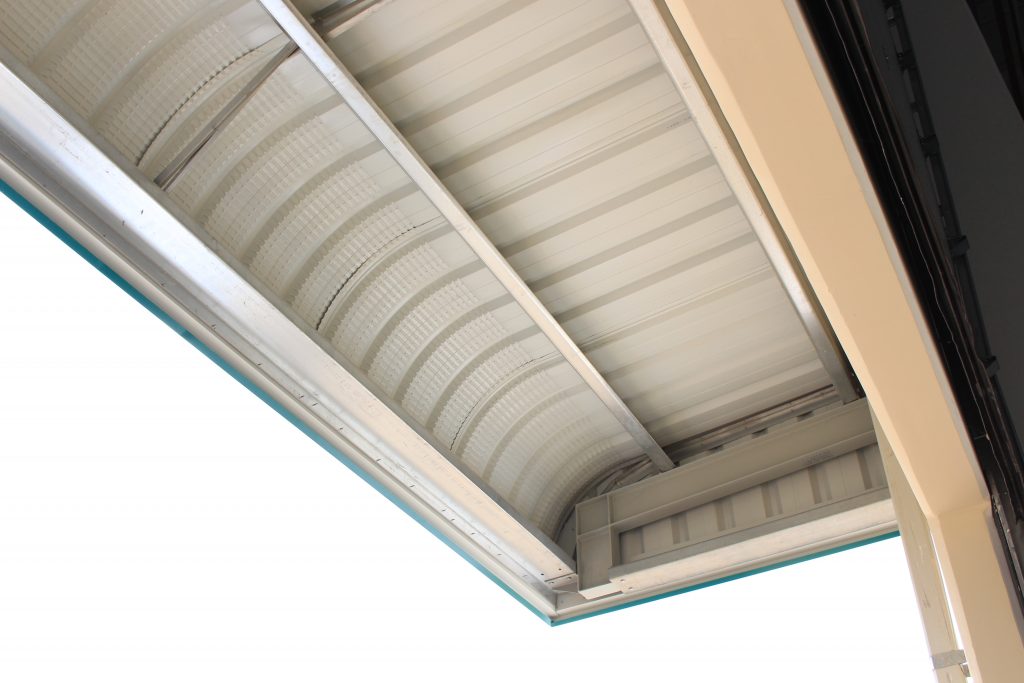
3.4. Purlins and bracing system
Steel purlins, typically galvanized with zinc, come in shapes like C and Z. The spacing between these steel purlins usually falls within the range of 1 to 1.5 meters and is connected to the main frame to support the load of the roof sheeting above. Although the weight of the roof and column bracing system is not excessively heavy, they are still an essential part of the factory’s structure. The bracing system plays a role in enhancing the stability of the main frame during construction as well as during use. There are many instances wherethe insufficient of the bracing systemcan lead to deformation in the factory’s structure.
3.5. Wall sheeting, roof sheeting and insulation material
The simplest approach is to use a single layer of galvanized and color coated metal sheeting,, which enhances aesthetics and provides protection against corrosion from environmental factors. However, in hot and humid weather conditions like in Vietnam, it is highly essential to install an additional layer of insulation, such as a layer of foam of glass fibers,, to reduce the interior temperature and minimize noise in the factory.
4. The building of pre-engineered steel factory process
The process of implementing the construction of a pre-engineered steel factory plays a crucial and complex role. To build a strong foundation, the construction team needs to carefully prepare right from the initial stages. Additionally, having a clear understanding of the project is essential to ensure a smooth construction process. The standard and professional construction process of a pre-engineered steel factory typically goes through three phases:
- Stage 1: Detailed Design
- Stage 2: Fabrication of Steel Components
- Stage 3: Construction and Installation on site
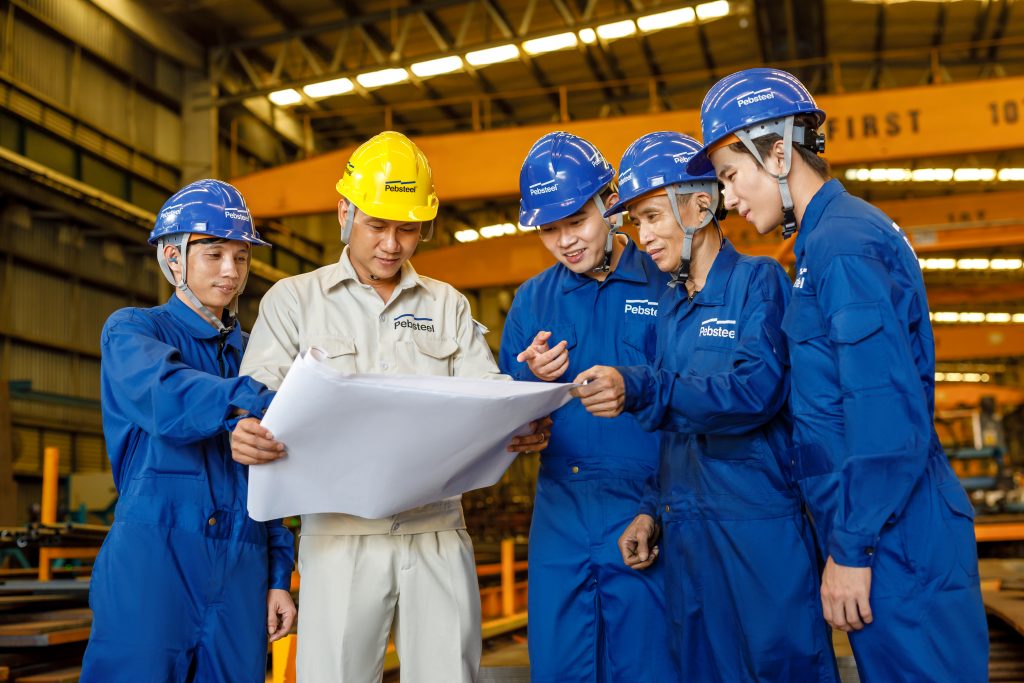
5. The quotation for the construction of a pre-engineered steel frame factory
The construction cost of a pre-engineered steel factory is not fixed, it varies depending on various factors such as environmental conditions, location, scope of work, and more. Additionally, the cost can change based on the construction timeline and specific client requirements regarding building materials and factory structure design.
6. Conclusion
The article provided above covers the concept, fundamental specifications, structure, procedures, and other details related to the construction of a pre-engineered steel factory. If you need comprehensive solutions for Pre-Engineered Steel Buildings and Steel Structure, please don’t hesitate to get in touch with Pebsteel. You can reach us via email at Marketing@pebsteel.com.vn or by calling +84 908 883531 for immediate assistance and consultation.

